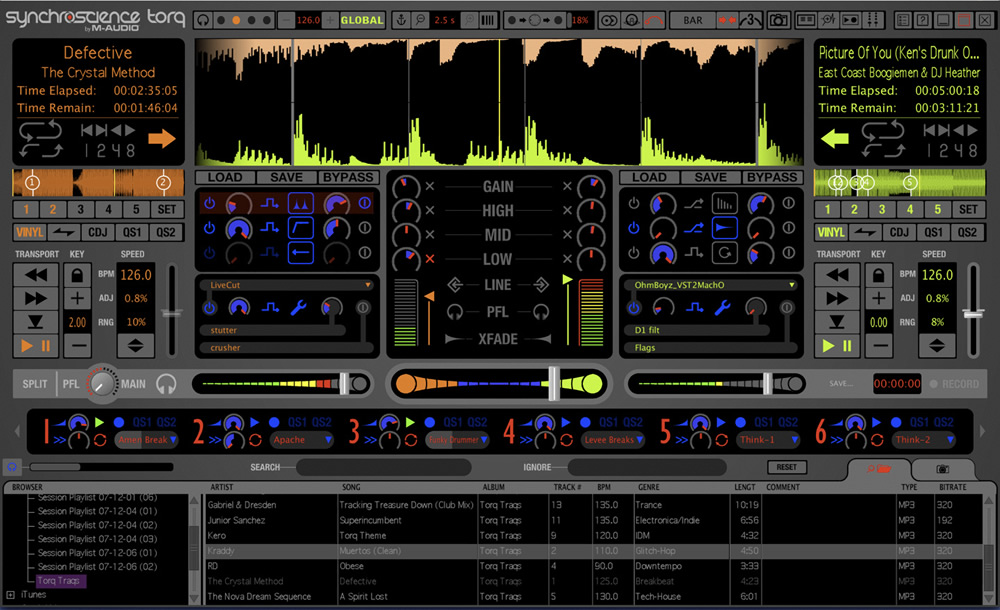The Mac OS X Audio/MIDI Setup utility is responsible for all Audio and MIDI data coming to and from your Mac, which makes it a valuable troubleshooting tool. The MIDI Setup in particular can come in handy if you begin to experience limited or no response from your MIDI device or if the device is not recognized at all. This guide will demonstrate how to create a new configuration. How & Why To Create Aggregate Audio Devices in macOS Audio MIDI Setup Joe Albano on Sat, September 5th 0 comments Joe Albano take sus through the ins and outs of creating aggregate audio devices for Mac users and explains why and in what situations you'd want to consider doing this.
- Audio MIDI Setup is the Mac OS X utility that allows you to set up audio and MIDI devices. This month we're going to delve into the MIDI Devices tab, in order to explain how applications work with the MIDI hardware you've connected to your Mac.
- In the Audio MIDI Setup app on your Mac, in the sidebar of the Audio Devices window, select a device. Note: For iOS and iPadOS devices, first click Enable, then select the device. You may be asked to unlock your device with a passcode or to trust the device.
- Does anyone know how to customize the device icons in Audio Midi setup? Dual 2.0 G5, Mac OS X (10.5.6) Posted on Jan 25, 2009 8:45 AM.
Audio MIDI Setup User Guide
Use Audio MIDI Setup to set up audio input and output devices, such as microphones and multichannel audio interfaces. You can also use it to route audio from iOS and iPadOS devices directly into your Mac.
Available settings in Audio MIDI Setup depend on the audio device you’re using. For example, you can adjust the volume for each channel your audio output device has available.
Connect your audio devices to your Mac and, if necessary, install any software included with the devices.
In the Audio MIDI Setup app on your Mac, in the sidebar of the Audio Devices window, select a device.
Note: For iOS and iPadOS devices, first click Enable, then select the device. You may be asked to unlock your device with a passcode or to trust the device.
Control-click the device, or click the Configure Selected Device pop-up menu at the bottom-left of the sidebar, then choose how the device is going to be used:
For sound input: Choose Use This Device for Sound Input.
For sound output: Choose Use This Device for Sound Output.
For playing system sounds: Choose Play Alerts and Sound Effects Through This Device.
On the right side of the Audio Devices window, choose the options available for the device you selected:
In most cases, “Clock source” is set to the default.
Click the Format pop-up menu, then set the sample rate and bit depth. Make sure they match the appropriate settings for your audio device.
If your Mac supports the hardware sample rate converter, the Hardware Rate Converter pop-up menu is available in the Input pane. When you choose Automatic from the pop-up menu, the hardware sample rate converter is turned on if the audio samples coming in are PCM and formatted according to the international standard IEC 60958-3. The hardware sample rate converter is turned off if the input stream is encoded. You can also choose Enable or Disable from the menu, to keep the hardware sample rate converter turned on or off.
If software volume control is available for your device, the Volume sliders appear blue to indicate that they’re active. Drag the sliders to set the volume for each channel.
To set up a surround (multichannel) speaker configuration, click Configure Speakers, then set up the configuration.
I would say it's a bug! Here's the workaround I've found:
tellapplication 'Audio MIDI Setup' toactivate
tellapplication 'System Events'

tellprocess 'Audio MIDI Setup'
tellmenu item 2 ofmenu 1 ofmenu bar item 'Window' ofmenu bar 1
ifnameis 'Show MIDI Window' thenclick
endtell
tellwindow 'MIDI Studio'
Audio Midi Setup Mac Download Free
setpositionto {0, 22}
performaction 'AXRaise'
endtell
do shell script '/usr/local/bin/cliclick 235 180'
endtell
endtell
Audio Midi Setup Macbook Pro
I made use of Cliclick to click the Network button, after finding its position with the cursor you get using ⇧⌘4.
Audio Midi Setup Mac Download
Dec 30, 2011 7:02 AM